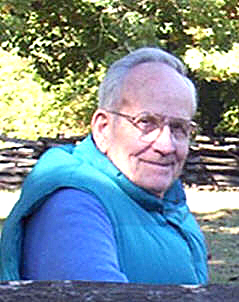
During a busy time in his life – working long hours in a challenging job with the Navy, attending the University of Maryland, raising a family – Mac Laird found peace in the Eastern Woodlands of the Shenandoah Valley.
The telecommunications specialist soaked up the natural beauty of maple, birch and beech trees, the grassy meadows of wildflowers, and the cloud-softened peaks of the Blue Ridge Mountains. He reveled in the forest’s rich history as a hunting ground shared by a dozen Indian tribes.
At 81, Laird published his first work of historical fiction, a novel about the land and the people who populated it in 1700. Dangerous Differences (www.quailhigh.com) hinges on the clash of native American and European cultures as settlers flocked to the New World. Now 83, Laird is working on the sequel, Christanna, scheduled to publish in May.
Laird’s debut novel has won praise, including a nomination by the Library of Virginia for its 14th annual Literary Awards, and glowing reviews:
“Dangerous Differences is a beautifully written history about those early struggles in Virginia, something I have not read in such vivid detail anyplace else,” wrote Robert Shultis for Laird’s hometown newspaper in Williamsburg – home to the world’s largest living history museum and, presumably, a higher-than-average concentration of history buffs.
“Mr. Laird brings to life the personal agonies, frustrations, tragedies and a few triumphs of people living during a critical period in American history.”
So how does an octogenarian launch a career as a novelist?
Laird says it began with 38 years of journaling as he documented days spent in the mountains, building with indigenous materials, including logs and limestone. His first book, a nonfiction work based on that experience and titled Quail High Above the Shenandoah, was published in 2007.
“When I put that book out and it was accepted so well, I thought, ‘Geez, maybe I can write.’ But I didn’t want to become a historian. I wanted to write worthwhile, entertaining stories about these great Virginia outdoors.”
He’d read an account of a 10-year-old Indian boy who, in the early 1700s, ran away from an English-run school in the Virginia colony. All alone, the boy traversed forests and forded rivers to return to his people.
“It’s a great story,” says Laird, who used it as the foundation for his tale of a 14-year-old Saponi Indian boy who is sent to school to learn the ways of the whites in order to help his people adapt.
Once inspired, Laird spent about a year immersed in volumes of local history housed at Williamsburg’s three libraries. He traveled to the locales where his story would be set, including Yadkin County, N.C., a onetime Saponi Indian town where Laird’s main character would live. Then he followed the trail his fictional characters would take to get to the school in Williamsburg.
“I once thought that every page of my book represents about three hours of research,” he says. “I did my honest best to make the places, events and times authentic. But, No. 1, I wanted to be entertaining, so I tried not to let history get in the way of the story.”
Laird’s editors were the Williamsburg Writers, a group of six local writers, including an English professor and a creative writing instructor from the local College of William & Mary. They’ve met faithfully every month for 10 years, critiquing 20-plus pages of manuscript for two members each time.
“They were the reason I was able to write and publish a book,” Laird says.
He’s enjoying his new career and still surprised (and delighted) by the fact that his words can entertain. He’s eager to publish the next book, but not ready to let go of his first.
“I really enjoyed writing that. It was a fun thing to do,” he says, adding with a chuckle, “I still enjoy reading my own stuff, too.
“But the reward is when I get emails that say, ‘What a great book!’ That does lots of things to your ego.”
Mac Laird left a small farm in Louisiana’s 604,000-acre Kitsatchi National Forest to join the Navy in 1944 and served in the Pacific theater as a radioman. After a career in telecommunications with the U.S. Navy, he earned a degree in business from the University of Maryland, followed by graduate work in business management. Throughout his career, Laird spent 40 years building a sprawling log cabin in the Shenandoah Valley of Virginia. He lives in Patriots Colony, 5 miles from Colonial Williamsburg (Va.) with his wife, Johnnie.

